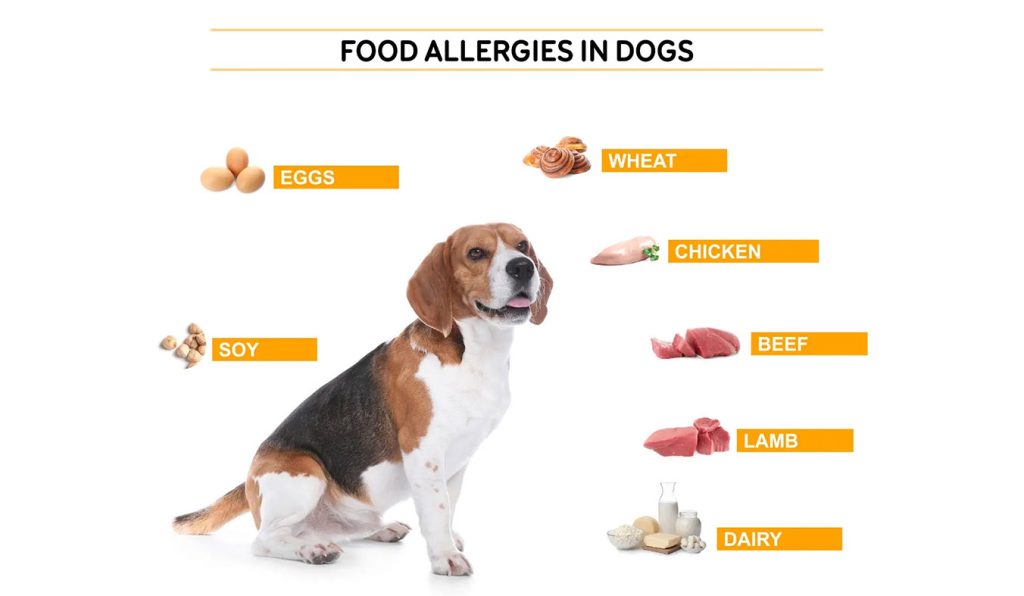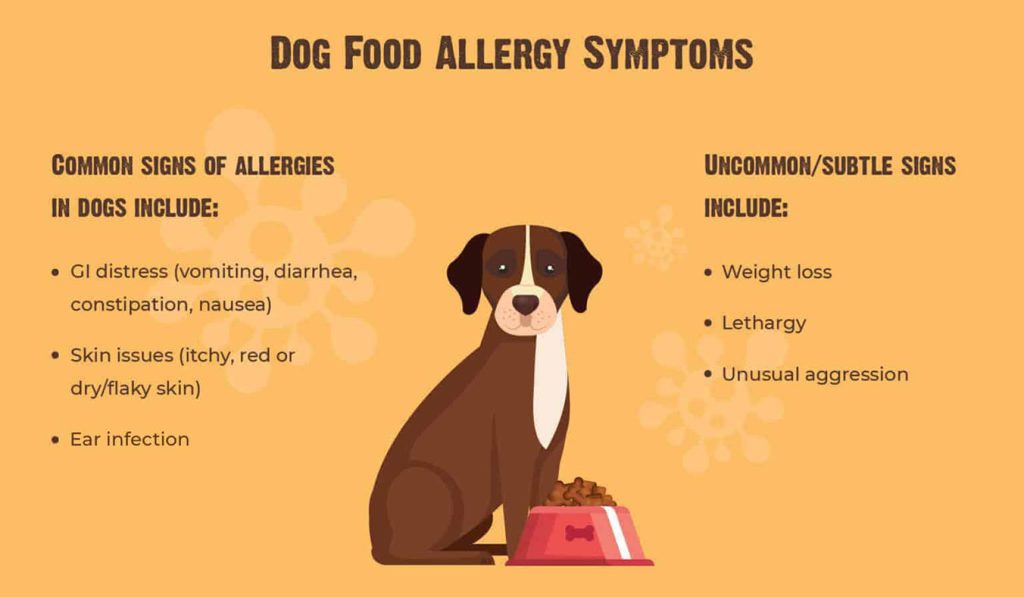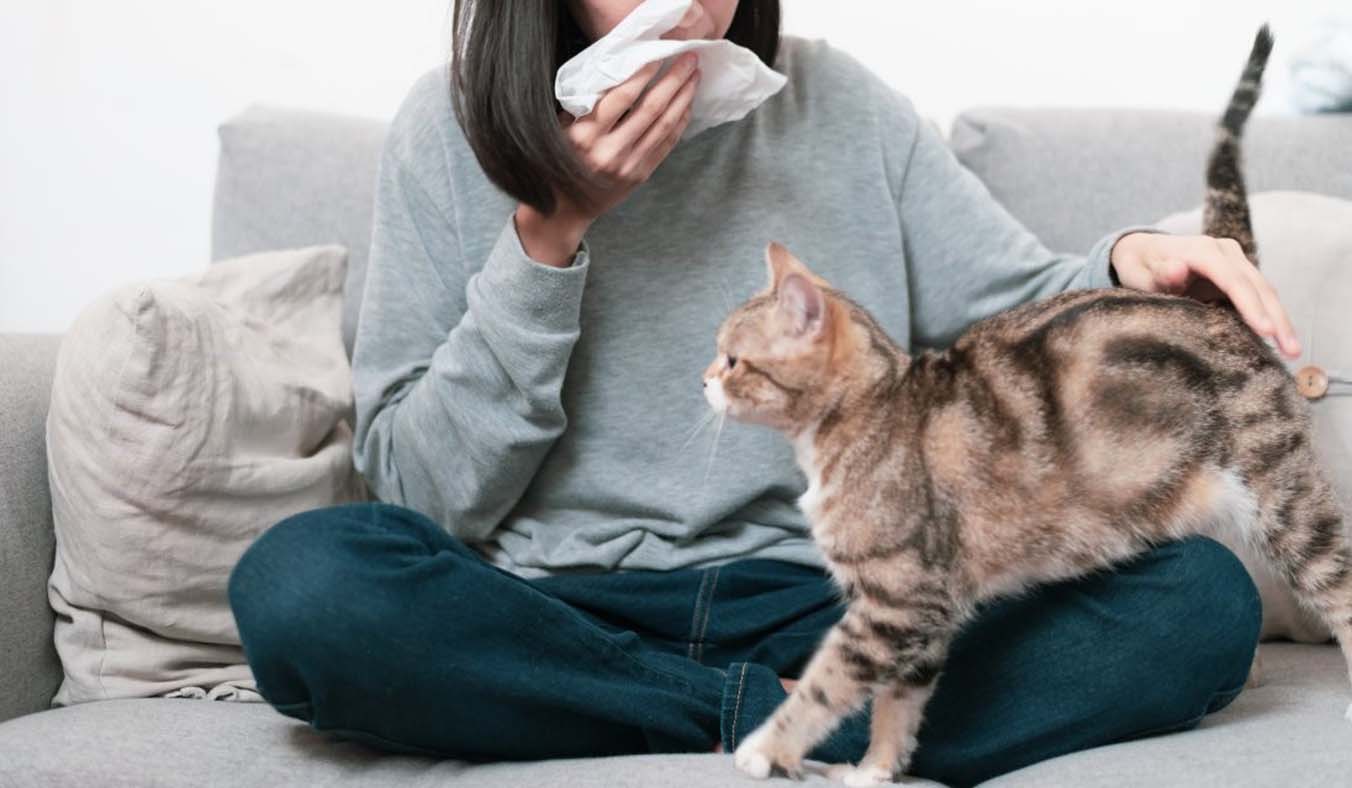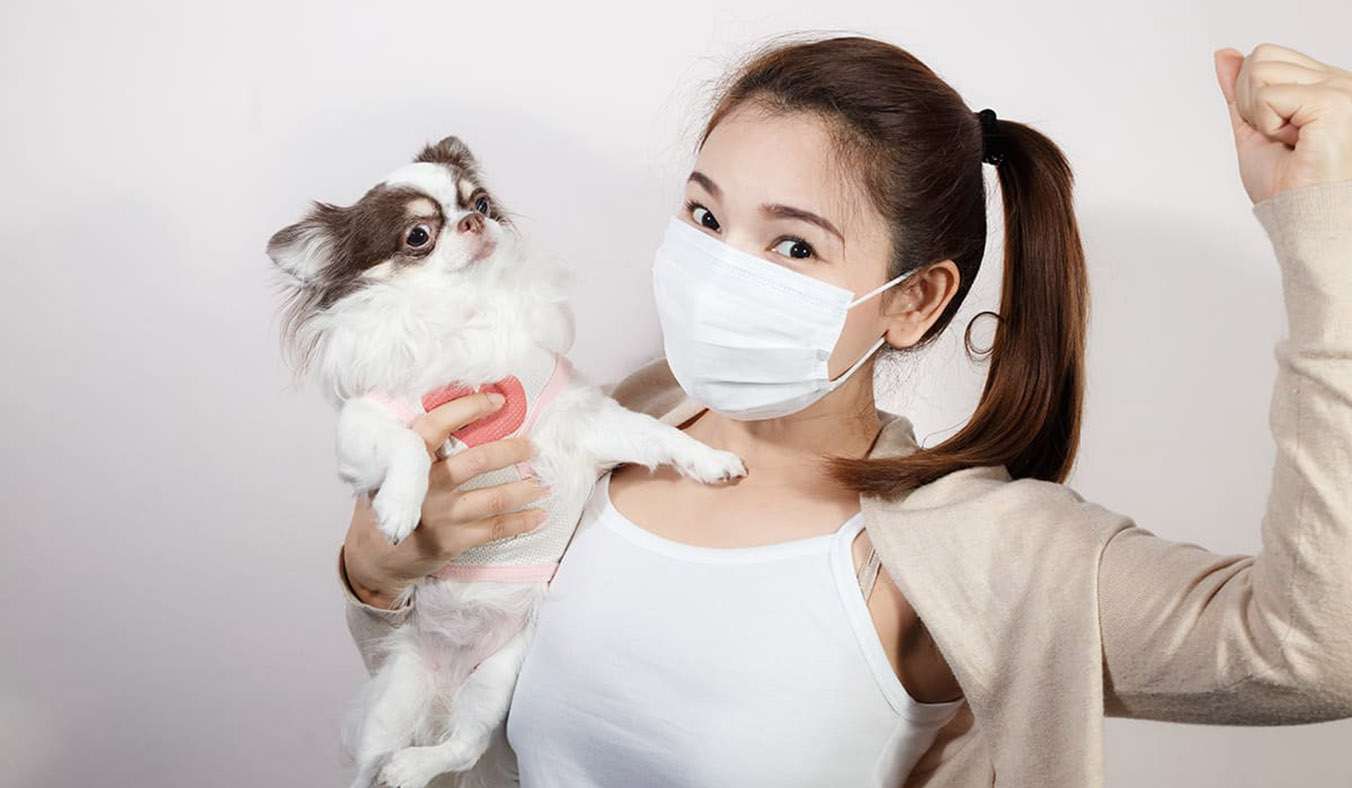Just like humans, dogs and cats can suffer from various allergies. An allergy refers to an abnormal immune system reaction to an external factor, known as an antigen. This reaction can occur due to food ingredients, in which case we refer to food allergies. It’s important to distinguish food allergies from food intolerances, which also involve an abnormal response to certain foods but lack an immune system basis. Environmental factors such as inhalant allergens (e.g., grass pollen, dust mites) or substances like metals, plastics, and chemicals can also trigger allergic reactions in pets. These are referred to as inhalant and contact allergies, respectively.
Understanding the causes of allergies in pets can be complex, but recognizing the bothersome symptoms is crucial for proper care. Let’s break down the different types of allergies that affect dogs and cats.
- Food Allergies in Dogs and Cats
Food allergies are relatively common in both dogs and cats. These allergies are caused by specific ingredients in their food, triggering a reaction from their immune system. Some of the most common allergens include proteins like beef, chicken, lamb, and grains such as wheat and corn. Food allergies can appear immediately after ingestion, or sometimes after a prolonged exposure to the offending ingredient.
Symptoms:
• Skin Issues: The most frequent signs of food allergies are skin problems, including redness, itching, rashes, and the development of pustules or scabs. Pets may also lick or chew at their paws, ears, or other parts of their body excessively.
• Digestive Problems: Dogs and cats may suffer from vomiting, diarrhea, or constipation. Affected pets often show a reduced appetite, and some may even lose weight due to gastrointestinal discomfort.
• Behavioral Changes: Pets may appear more lethargic, avoiding physical activities or play, which can also signal discomfort. If your dog or cat is showing a lack of interest in their regular activities, it’s a red flag.
What to Do:
• If you notice these symptoms, it’s essential to consult your veterinarian as soon as possible. Keep a detailed record of your pet’s diet, including both regular meals and any treats, as this information will be vital for your vet.
• The vet may suggest a food elimination trial, where you feed your pet a specially formulated hypoallergenic diet for a few weeks to pinpoint the allergens. Once identified, hypoallergenic or prescription diets can be used to manage the allergy.
• It’s also essential to remember that food allergies can sometimes be confused with other skin or gastrointestinal issues, such as parasites or infections. Therefore, it’s crucial to undergo a thorough veterinary examination for an accurate diagnosis.
- Contact Allergies in Dogs and Cats
Contact allergies occur when your pet comes into direct contact with an allergen, often through substances they touch or are exposed to. These allergens may include certain chemicals found in household products like shampoos, floor cleaners, or detergents, as well as materials like rubber, plastic, or metals.
Symptoms:
• Localized Skin Reactions: In contact allergies, symptoms are generally limited to the area of direct contact. For example, if a dog is allergic to the metal in its collar, the skin around the neck will often become inflamed, itchy, and may develop hair loss or sores.
• Itching and Redness: Affected areas may appear red, inflamed, or covered with small bumps. Pets may scratch excessively, which can worsen the condition.
• Skin Lesions: Blisters or crusty sores may develop, particularly in areas with repeated exposure to the allergen.
What to Do:
• As with food allergies, if you notice these signs, consult a veterinarian to rule out other causes. You may need to think about any recent changes in your pet’s environment. Have you introduced new cleaning products or switched to a different type of bedding, bowl, or collar? Identifying the trigger will help prevent further reactions.
• In most cases, discontinuing exposure to the allergen (e.g., changing cleaning products, switching to a different collar) can alleviate symptoms. Your vet may also recommend topical treatments to soothe irritated skin.

- Inhalant Allergies in Dogs and Cats
Inhalant allergies occur when pets react to airborne allergens. Common triggers include dust mites, mold, grass or tree pollen, and even certain perfumes or air fresheners. Pets inhale these allergens, which can cause a range of respiratory issues.
Symptoms:
• Coughing and Sneezing: Persistent coughing or sneezing is a common sign that your pet is dealing with airborne allergens.
• Nasal Discharge: Affected pets may exhibit clear or mucous-filled nasal discharge, especially in the mornings.
• Eye Irritation: Watery eyes or redness around the eyes may occur as part of an allergic reaction to environmental allergens.
• Respiratory Distress: In severe cases, pets may show signs of labored breathing or wheezing, especially during the allergy season when pollen levels are high.
What to Do:
• If your pet is showing respiratory symptoms, it’s important to consult your veterinarian immediately. Allergies can sometimes mimic symptoms of more severe respiratory diseases, such as asthma or infections.
• Allergy testing may help identify specific allergens. Your vet might recommend medications such as antihistamines or corticosteroids to control inflammation and itching. Additionally, creating a clean environment by reducing dust and allergens in your home can help manage symptoms.
- How to Manage and Treat Allergies in Dogs and Cats
Effective treatment of allergies in pets often requires a combination of approaches. Once an allergy is diagnosed, your veterinarian will guide you through the best treatment plan for your pet’s specific situation.
Treatment Options:
• Medications: Depending on the severity of the allergy, your vet may prescribe antihistamines, corticosteroids, or even immunotherapy (allergy shots) to help manage symptoms.
• Dietary Changes: For food allergies, switching to a hypoallergenic or prescription diet is often the most effective long-term solution.
• Topical Treatments: For skin-related allergies, medicated shampoos, creams, or ointments may help soothe irritated skin.
• Environmental Management: For inhalant allergies, reducing exposure to allergens (e.g., using air purifiers, cleaning bedding frequently) can help mitigate symptoms.
Prevention:
• Regular veterinary check-ups are essential to monitor and manage allergies effectively.
• Keeping a clean and allergen-free environment is vital, especially if your pet suffers from inhalant allergies.
• For food allergies, sticking to a specialized diet can prevent

Allergies in dogs and cats are common but often overlooked conditions. Whether they involve food, contact, or environmental allergens, these allergies can significantly affect your pet’s quality of life. Recognizing the signs and seeking early veterinary intervention is key to ensuring your pet stays healthy and happy. With the right treatment plan, most allergies can be well-managed, allowing your furry friend to enjoy a more comfortable life.
Always remember, the information provided here is for educational purposes and should never replace professional advice from a veterinarian. Regular check-ups and open communication with your vet are vital for the well-being of your pet.



